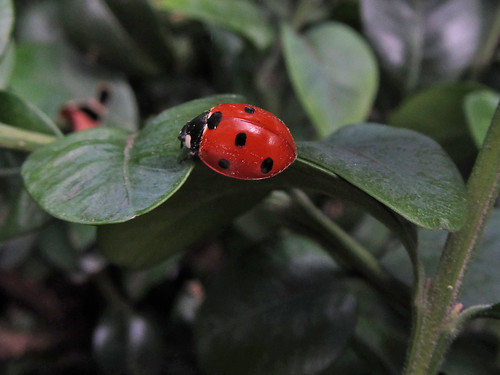 |
| Not from this year, but I commonly find 7-spot Ladybirds wintering on this Box. |
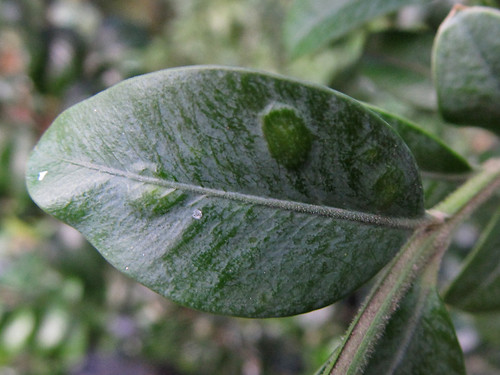 |
| Box leaf with galls of Monarthropalpus flavus (the Box leaf-miner) |
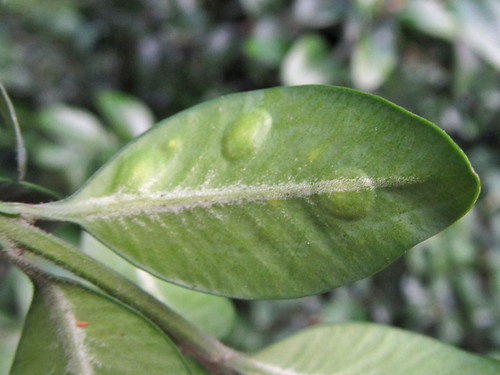 |
| Underside of the same leaf. |
This is the only location I have found this leaf-miner despite searching in various parts of the country. I suspect that the reason lies in whether the Box is clipped or not. The females oviposit in young leaves in the spring (shown in the video below) and thus the new growth needs to remain intact through the following winter. In recent years this insect has been identified as a major pest of Box and there are many good accounts of it's biology on the web.
I have tried to rear these through from larvae but failed because the leaves dried out. This year I was puzzled because many of the gall/mines had exit holes: perhaps early emerging parasitoids.
On opening the mine one finds a yellow-orange grub which usually wriggles vigorously.
 |
| Opened mine with gall midge larva |
Gall midge larvae typically have three or four instars and most have a distinctive feature in the last instar called the sternal spatula. The Box leaf-miner is large enough for this to fairly easy to see with a hand lens.
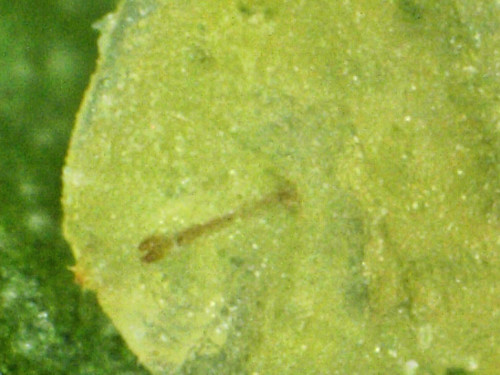 |
| Sternal spatula on late instar Box leaf-miner. Taken using a USB microscope. |
Another gall is found on Box much more frequently (and can be seen in plants in Garden Centres). This is the so-called Cauliflower gall caused by a psyllid, Psylla buxi. Leaves remain tightly curled or are just distorted, usually at the ends of shoots.
 |
| Deformed leaves galled by Psylla buxi |
My last insect over-wintering on Box is a caterpillar, presumably of a polyphagous moth species, which I think might be a Tortrix.
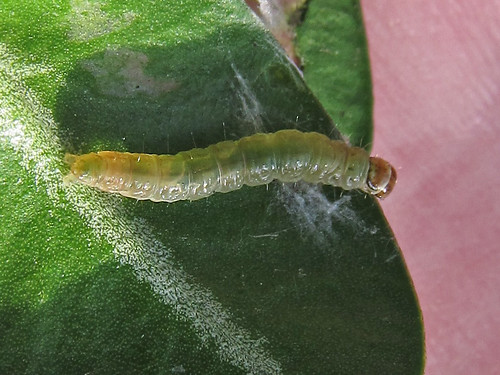 |
| Micromoth feeding between two Box leaves spun together. |
Even a small bush can hold a wealth of insect life in winter if one knows where to look.
Revised 2023-07-31: correction of typos, update names, correct links.
No comments:
Post a Comment